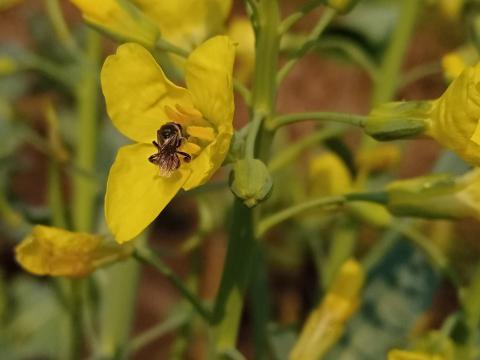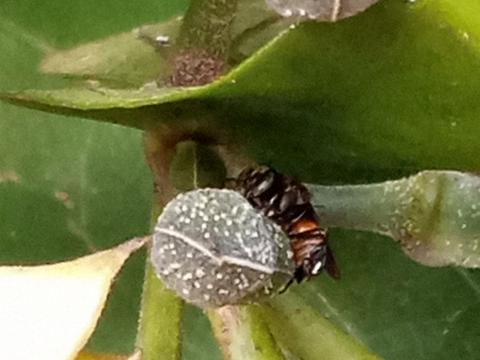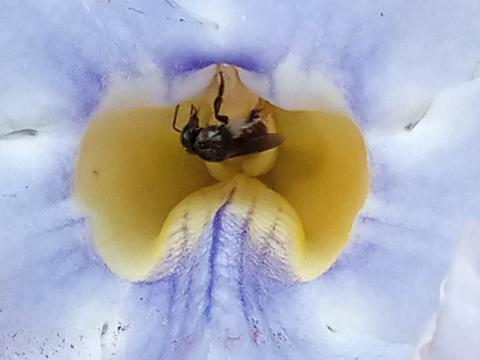Stingless bees are one of many types of bees, and they play an important role in agricultural production. At least seven species of stingless bees have been reported in Uganda. These include: Hypotrigona gribodoi, Meliponula bocandei, Meliponula erythra, Meliponula lendliana, Meliponula nebulata, Meliponula ferruginea, and Plebeina hildebrandtii.
Depending on the species, stingless bees will naturally nest in underground cavities, termite mounds, tree hollows, tree branches, walls and crevices on buildings.
Stingless bees are smaller in size than honeybees (range from 2mm – 8mm long) but are remarkable for their unique honey which is highly prized as medicine by some Ugandan communities e.g. the Batwa. Unlike the honeybees, stingless bees have received little attention in beekeeping development and the practice of meliponiculture (rearing stingless bees) remains undeveloped in Uganda.
Stingless bees are also important pollinators of wild and domesticated plants. Meliponula bocandei has been observed visiting flowers of avocado, M. ferruginea on flowers of pumpkin and H. gribodoi on flowers of oranges (personal observations, Moses Chemurot). The beeDIP project has collected several specimens of stingless bees from diverse localities which suggests that they pollinate other plants besides the three mentioned here.
Widespread conversion of natural habitat to other uses plus indiscriminate use of insecticides and herbicides are key threats to the survival of stingless bees. There is therefore a high risk of stingless bees disappearing from Uganda’s ecosystems, especially since meliponiculture is under-developed in the country. In a bid to develop meliponiculture, the National Agricultural Research Organization in collaboration with Makerere University is implementing a project to domesticate stingless bees of commercial value in Uganda. Such efforts can help with the conservation of stingless bees. But more can be done even at individual level to secure the lives of stingless bees. One can maintain plants that provide the stingless bees with food and shelter or, protect old termite mounds and tree stumps that are known to have colonies of stingless bees. More remains to be learned on how we can protect our stingless bee populations.





